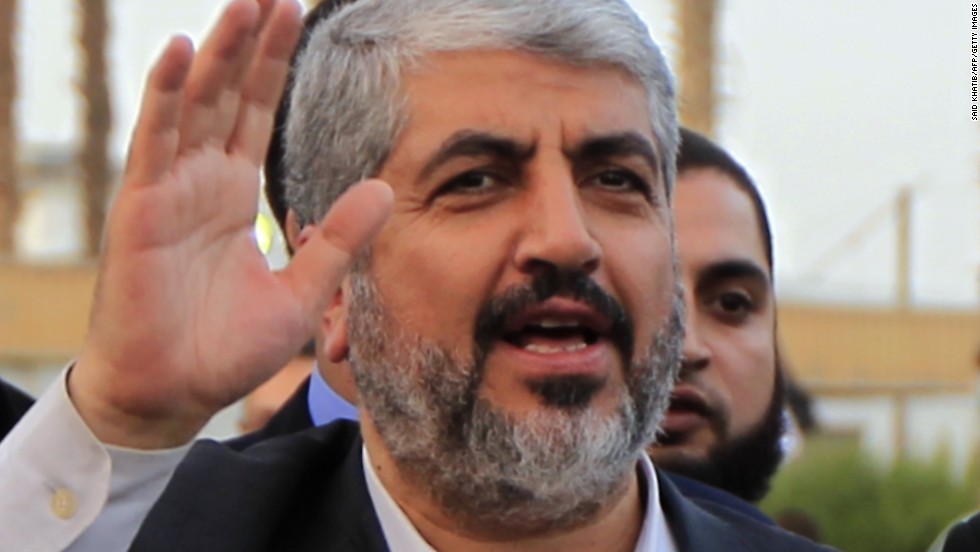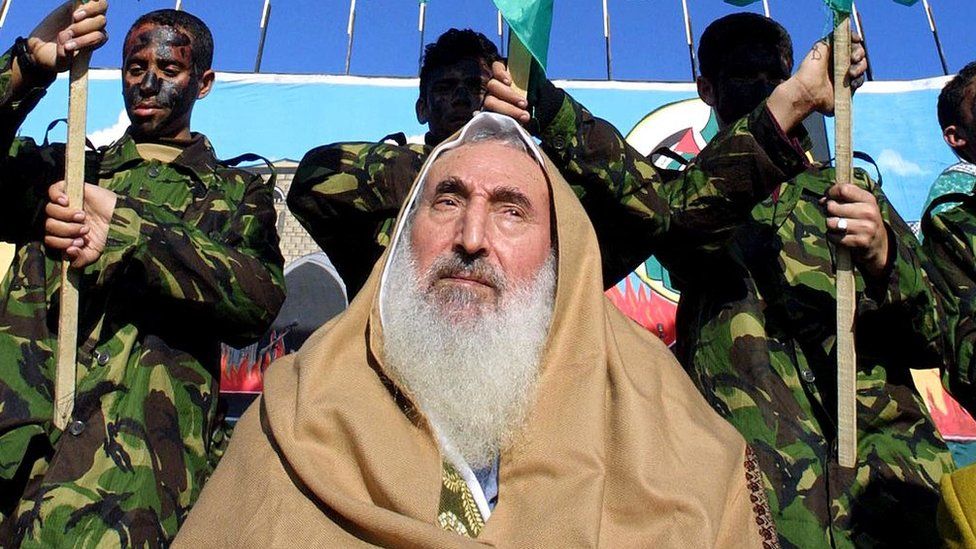Historical Context and Background: Israel Hamas Leader

Hamas, a Palestinian Islamic resistance movement, has a complex history intertwined with the Israeli-Palestinian conflict. Understanding its origins, leadership, and ideology is crucial to grasping the dynamics of the region.
Origins and Leadership Structure
Hamas emerged in the 1980s as a response to the Israeli occupation of the West Bank and Gaza Strip. It was founded by Sheikh Ahmed Yassin, a blind Islamic scholar who preached resistance against Israel. Hamas’s leadership structure is hierarchical, with a Shura Council, the supreme decision-making body, at the top. The council elects a political bureau, which oversees daily operations.
Key Events and Milestones
- 1987: The First Intifada, a Palestinian uprising against Israeli occupation, provided fertile ground for Hamas’s growth. Hamas’s use of armed resistance gained popularity, and it began to challenge the Palestine Liberation Organization (PLO) for leadership.
- 1993: The Oslo Accords, which aimed to establish a Palestinian state, were seen by Hamas as a betrayal of the Palestinian cause. Hamas refused to recognize Israel and continued its armed struggle.
- 2006: Hamas won a landslide victory in Palestinian parliamentary elections, taking control of the Palestinian government. This victory marked a significant shift in Palestinian politics and led to increased tensions with Israel.
- 2007: Hamas seized control of the Gaza Strip after a brief but violent conflict with Fatah, the rival Palestinian faction. This split the Palestinian territories into two separate entities.
- 2014: A major conflict erupted between Israel and Hamas in the Gaza Strip, resulting in significant casualties on both sides. The conflict raised international concerns about the humanitarian crisis in Gaza and the prospects for peace.
Historical and Political Context, Israel hamas leader
Hamas’s ideology is rooted in Islamic fundamentalism and the belief that the land of Palestine is an Islamic endowment that cannot be ceded to non-Muslims. Its objective is to establish an Islamic state in all of historic Palestine, including areas currently under Israeli control.
Hamas’s emergence was influenced by several factors, including:
- The Israeli occupation, which created a sense of injustice and resentment among Palestinians.
- The failure of the PLO to achieve a lasting peace agreement with Israel.
- The rise of Islamic fundamentalism in the Middle East, which provided a powerful ideological framework for resistance.
Current Leadership and Structure

Hamas, the Islamic Resistance Movement, is a complex organization with a leadership structure that has evolved over time. Understanding this structure is crucial to comprehending its decision-making processes and the dynamics within the organization.
Current Leadership
The current leader of Hamas is Ismail Haniyeh, who assumed the position after the death of Khaled Mashal in 2017. Haniyeh, a founding member of Hamas, has a long history of involvement in the organization, including serving as the Prime Minister of the Hamas-controlled Gaza Strip. He is considered a pragmatic leader, known for his efforts to balance the organization’s ideological goals with the realities of governing.
Leadership Structure
Hamas’s leadership structure is hierarchical and decentralized, with various branches and committees responsible for different aspects of the organization’s activities. The structure is as follows:
- Political Bureau: This is the highest decision-making body of Hamas, responsible for setting the organization’s overall strategy and policies. It is composed of a number of members, including the current leader, Ismail Haniyeh. The Political Bureau is based in Qatar and is responsible for the overall direction of Hamas. It is important to note that the Political Bureau’s decisions are subject to consultation and approval from the Hamas Shura Council.
- Shura Council: This is a consultative body, responsible for advising the Political Bureau on religious and political matters. The Shura Council is composed of senior Hamas leaders and scholars. It is the body that ultimately approves the Political Bureau’s decisions, ensuring that they are aligned with Hamas’s religious and ideological principles.
- Military Wing (Izz ad-Din al-Qassam Brigades): This is the armed wing of Hamas, responsible for carrying out military operations against Israel. The military wing is a separate entity from the Political Bureau, but it is ultimately under its control. The Izz ad-Din al-Qassam Brigades is a powerful force, capable of launching rockets into Israel and carrying out other military operations.
- Internal Committees: Hamas has various internal committees responsible for specific areas of activity, such as social services, education, and media. These committees work under the direction of the Political Bureau and Shura Council. They are crucial for maintaining Hamas’s influence and support within the Palestinian community.
Decision-Making Process
Hamas’s decision-making process is complex and involves a series of consultations and approvals.
- Political Bureau: The Political Bureau is the primary body responsible for initiating decisions. It discusses and debates proposals, considering the organization’s overall goals and the current political situation.
- Shura Council: Once the Political Bureau reaches a decision, it is presented to the Shura Council for review and approval. The Shura Council ensures that the decision aligns with Hamas’s religious and ideological principles. The Shura Council plays a crucial role in ensuring that the Political Bureau’s decisions are consistent with Hamas’s core values and beliefs.
- Implementation: Once the Shura Council approves the decision, it is then passed on to the appropriate Hamas branch or committee for implementation. The process of implementation involves mobilizing resources, coordinating with other branches, and ensuring that the decision is carried out effectively.
Hamas’s Goals and Strategies

Hamas, a Palestinian Islamic resistance movement, has a complex set of goals and strategies that have evolved over time. Understanding these objectives and their implementation is crucial to comprehending the ongoing Israeli-Palestinian conflict.
Domestic Goals and Objectives
Hamas’s domestic goals are rooted in its vision for a Palestinian state, its social and religious agenda, and its commitment to resisting Israeli occupation.
- Establishment of an Islamic State: Hamas aims to establish an Islamic state in the Palestinian territories, based on its interpretation of Islamic law. This goal is explicitly stated in its charter, which calls for the liberation of Palestine and the establishment of an Islamic state.
- Social and Religious Agenda: Hamas promotes a conservative social agenda, emphasizing Islamic values and practices. This includes advocating for gender segregation, restrictions on women’s rights, and the promotion of Islamic education.
- Resistance to Israeli Occupation: Hamas considers the Israeli occupation of the Palestinian territories illegitimate and has consistently engaged in armed resistance against Israel. Its primary objective is to end the occupation and achieve Palestinian self-determination.
International Goals and Objectives
Beyond its domestic objectives, Hamas seeks to garner international support for its cause and to weaken Israel’s standing on the global stage.
- International Recognition and Support: Hamas seeks recognition as the legitimate representative of the Palestinian people and seeks international support for its goals. This includes efforts to gain membership in international organizations like the United Nations.
- Isolation of Israel: Hamas aims to isolate Israel internationally by promoting boycotts, divestment, and sanctions campaigns. It also seeks to expose what it perceives as Israel’s human rights abuses and violations of international law.
Strategies and Tactics
Hamas employs a variety of strategies and tactics to achieve its goals, ranging from armed resistance to political engagement.
- Armed Resistance: Hamas has historically relied heavily on armed resistance, launching rockets and engaging in armed clashes with Israeli forces. This strategy has been highly controversial, leading to civilian casualties on both sides and drawing international condemnation.
- Political Engagement: In recent years, Hamas has also pursued a more political approach, participating in Palestinian elections and engaging in negotiations with Israel. However, its commitment to armed resistance remains a key component of its strategy.
- Social and Cultural Programs: Hamas invests heavily in social and cultural programs, providing services like education, healthcare, and social welfare. This strategy aims to build support among the Palestinian population and strengthen its legitimacy.
- International Advocacy: Hamas actively engages in international advocacy, seeking to build support for its cause through lobbying efforts, public relations campaigns, and alliances with other organizations.
Hamas’s Approach to Conflict Resolution
Hamas’s approach to conflict resolution is fundamentally different from that of the Israeli government. While Israel seeks a negotiated two-state solution, Hamas has traditionally rejected this approach, demanding the complete withdrawal of Israel from all Palestinian territories.
“We will not negotiate with the Zionists. We will not recognize them. We will not make peace with them. We will fight them until they leave our land.” – Hamas Charter
Israel hamas leader – The rhetoric of the Israeli Hamas leaders, often couched in the language of resistance, is a reflection of the complex geopolitical landscape they operate within. This landscape, shaped by the ongoing conflict with Israel, is further complicated by the deep-rooted tensions between Israel and Iran, a relationship steeped in mistrust and rivalry.
The Iranian-Israeli dynamic, characterized by proxy wars and ideological clashes, casts a long shadow over the Israeli-Palestinian conflict, making any resolution all the more elusive.
The conflict between Israel and Hamas, a complex web of historical grievances and political agendas, is a stark reminder of the volatile nature of the Middle East. While the world watches with bated breath, the conflict raises questions about the future of the region and the role of technology in shaping it.
One such technology is the burgeoning world of digital currencies, like ripple xrp , which offers a potential alternative to traditional financial systems. Could this revolution in finance offer a new avenue for peace and reconciliation in the region, or will it simply fuel further conflict?
Only time will tell how the intersection of politics, technology, and economics will play out in the Israeli-Palestinian conflict.
